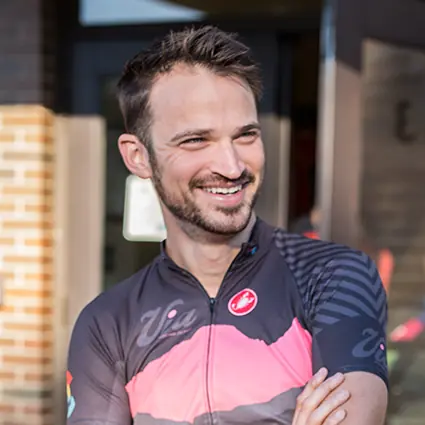“They Built the Grotto with the Rocks from His Farm” — Peter Kintz of Kintz Avenue
How a family from humble roots helped to define Notre Dame and South Bend
BY AARON HELMAN // POSTED OCTOBER 9, 2024

My friend Greta told me the story as if it were an urban legend, and as I watched her speak through the wisps of the steam that blew across my untouched coffee, it might have seemed like magic. But it also might have been true.
The story went that her great-great grandfather came to South Bend from Pennsylvania, purchased a plot of land from Father Corby himself, then worked on parts of the early construction of The University of Notre Dame, and that even the campus's historic Grotto was built with the rocks from her antecedent's farm.
It's a story that, I'm happy to report, is entirely accurate.
Kintz Avenue runs just off Juniper and just north of the Toll Road for less than half-a-mile. Juday Creek runs through the place and there's an enormous home going up at its western terminus. You might have driven past it a hundred times without noticing the street sign, and I know that I certainly have, but it's a road with a story worth telling.
Peter Kintz was born in Pennsylvania in 1838, married to Mary in Ohio, and settled in South Bend during the population explosion of the 1860s. The couple had 11 children together, and nine of them would survive into adulthood. Then, in 1891 they purchased the land along the road that would become their namesake. The seller of that land was none other than the University's own Father William Corby, a shrewd deal made at 7% interest that would benefit each person involved before all was said and done.
The Kintzes farmed their land and found an immediate buyer for their goods right next door. Receipts and invoices show that Notre Dame purchased meat, eggs, and milk from the nearby Kintz Farm. Besides that, the enterprising Kintzes were more than willing to work off their debt, performing maintenance around campus and assisting with construction in order to expedite their mortgage payments. The family quickly established a routine. Summers were spent on the farm. Winters were spent working for the University.
In 1896, while the Kintz family was still working through their mortgage payment, Father Corby announced plans to construct a stone Grotto on campus that would be roughly a one-third replica of the Lourdes Grotto in France. The new shrine would be a rock cave, and construction was going to require a lot of rocks.

The Kintzes had painstakingly cleared their farmland along Juday Creek and had a collection of rocks they were anxious to get rid of. Peter's three youngest sons — John, Edward, and Andrew — were commissioned for the work, hauling wheelbarrow loads of stones and boulders almost exactly a mile from the family farm to the Grotto. By the end of 1896, the Grotto was dedicated and opened to the public, and by 1901, the Kintzes had paid off their loan — nearly twenty years ahead of schedule.
But the family legacy didn't nearly end with the construction of the Grotto. John Kintz was a star pitcher for the Clay Township Baseball Club. The catcher for that team — James Luther — would go on to marry John's sister, Cecelia. Their grandchildren would on to become the Roemers.

